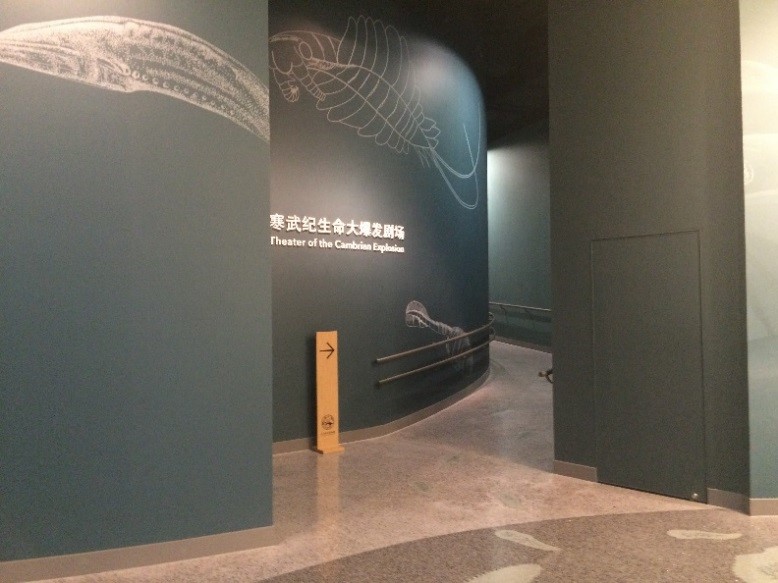

August 27, 2015 — A groundbreaking theater design by Evans & Sutherland Computer Corporation (E&S) gives a whole new meaning to the idea of immersive environments in public entertainment.
Opened in June 2015 at the new Shanghai Natural History Museum visitors can now experience being swept to the bottom of the primeval Cambrian ocean 550 million years ago, a time when animals first appeared on Earth.
“This is the first and only theater of its kind in the world,” said Minsheng Lu, director of E&S’ China office.
“The Shanghai museum is very proud of the theater. It’s one of our most exciting attractions,” said a staff member.
The immersive environment is inside the museum’s Theater of the Cambrian Explosion. The computer-animated production, entitled Dawn of the Animal World, carries the audience aboard an imaginary submarine that navigates the primeval Cambrian ocean.
This time-travel journey takes the audience back to a unique period when our small, blue planet exploded with a dizzying array of bizarre multi-celled life forms appearing for the first time. Up to 40 visitors per show will stand on a 5-meter diameter central pedestal surrounded by an ancient ocean teeming with exotic life forms. “The show is very striking and imaginative,” said Lu.
During a simulated three-day period of daytime and nighttime transitions, the submarine navigates down a continental slope, delving steadily deeper into the Cambrian ocean.
The eight-minute show brings fossils from the Cambrian Period to life. Sea creatures more alien looking than described in science fiction stories surround the audience. Fantasy-like creatures swim overhead and beneath visitors’ feet in a seamless, full 360-degree panorama. The submarine cruises across a seafloor alive with colorful plant life, and multi-legged trilobites scurrying across the sandy bottom while being stalked from above by nightmarish sea monsters.
Visitors witness the drama of hunter vs. hunted, eat or be eaten, as it played out in this biological arms race that was never to be repeated in our planet’s history. Visitors witness the genesis of all complex animal life on Earth. The Cambrian sea dwellers would go on to ultimately propel evolution into shaping dinosaurs, mammals, and eventually humans.
The new museum wanted to showcase this so-called Cambrian Explosion, especially because the most complete record of the early Cambrian Period can be found in the Chengjiang fossil site in China’s Yunnan province. But the museum planners were not quite sure how to do it, said Lu. They approached E&S for creative ideas.
For four decades, E&S has developed and advanced computer graphics technology and is the world’s leading provider of complete fulldome digital theater systems and shows. But this is the first time they literally turned the dome upside down to create an undersea environment.
There were numerous challenges for E&S engineers in designing the Cambrian Explosion Theater. The engineers created the sense of total immersion by designing plankway entrances onto the theater pedestal. Twelve bright LED projectors seamlessly blend videos to fit on the 10-meter diameter dome surface. The ultra high definition screen resolution is over 33 megapixels. The E&S team guided the show’s video production company, Shanghai Motion Magic Digital Entertainment Inc., through the process of transitioning from flat-screen, high-definition video productions to an encompassing dome experience.
“Evans & Sutherland showed exceptional imagination in taking on this project, and they came up with challenging ideas,” said Lu.
The company is looking forward to building on their Cambrian theater design to give museum visitors elsewhere in the world a compelling, “you-are-there” immersive experience with similar innovative facilities.
